Different Germanic tribes settled in Europe, and combined Roman, Early Christian, and Barbarian traditions to create the first style out of the “Dark Ages.”
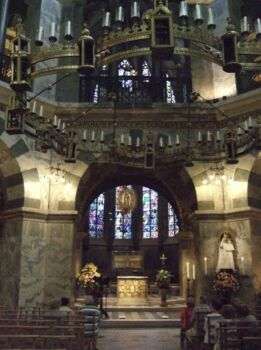
Image source: https://search.creativecommons.org/photos/d4f456f4-336c-43cc-a8f7-136d3c6382e5 by Jim Linwood
The Merovingians, the Carolingians, and the Ottonians
These Frank dynasties wanted large buildings with stones cut precisely and resemblance to the Roman basilicas. These structures were based on a combination of block units used to form a complex internal space and a rich external silhouette. This is an anticipation of the vertical emphasis and other hallmarks of the Romanesque style.
These architectural elements were common to this style:
- Round arches
- Barrel vaults
- Piers and aisles with galleries above them
- Semi-circular arches as windows, doors, and arcades
- Ornamented portals around the main door named tympanum
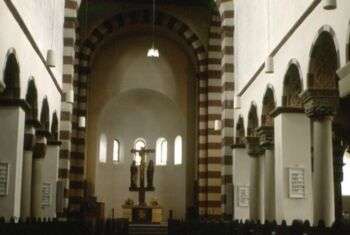
Image source: https://search.creativecommons.org/photos/60101a9a-8622-4cf4-9bc9-a40137cef8be by roger4336
In Europe, Roman architectural tradition survived because the Franks continued to build large stones buildings like monastery churches and palaces.
The unification of the Frankish kingdom under Clovis I, brought to light the need for churches. Further, the former ones were now the power-houses of the Merovingian, which wanted to continue the Roman basilica tradition.
The Merovingian dynasty was replaced by the Carolingian dynasty. Thus, Carolingian architecture began to surface in the Holy Roman Empire, and these successive Frankish dynasties contributed to the Romanesque architecture.
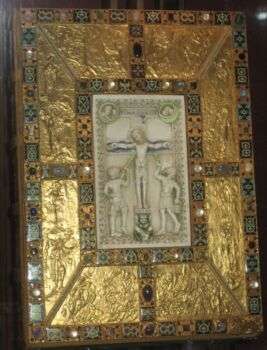
Image source: https://en.wikipedia.org/wiki/Codex_Aureus_of_Echternach#/media/File:CodexAureusEpternacDEckel.JPG
Pre-Romanesque in Northern Europe
The Anglo-Saxon identity was shaped in Northern Europe, with emphasis on intricate metalwork, ivory carving, sculpting, and illuminated manuscripts, which had plant scrolls combining Celtic and Viking traditions. The Religious architecture was usually simple and modest, without any decorations.
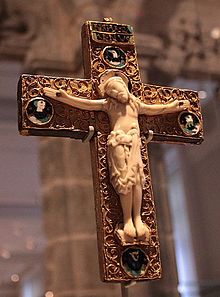
Image source: https://en.wikipedia.org/wiki/Anglo-Saxon_reliquary_cross
Pre-Romanesque in Southern Europe
Signs of Pre-Romanesque style in Spain and Portugal came from the Visigothic art, which introduced the horseshoe arches to the Moorish style and improved jewelry.
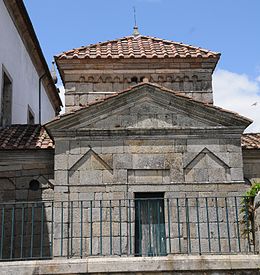
Image source: https://it.wikipedia.org/wiki/Cappella_di_S%C3%A3o_Frutuoso_de_Mont%C3%A9lios#/media/File:Capela_de_S._Frutuoso.JPG
Italy benefited from the Arabs of the Normans and contributed to the First Romanesque style. The external part of their buildings was adorned with several blind arches named Lombard bands, accompanied by thick walls and no sculptures. The interior usually featured iconographic mosaics and frescoes instead.
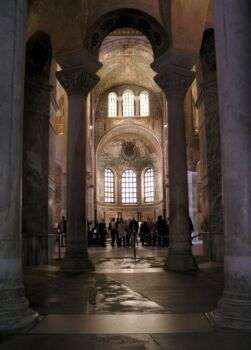
Image source:https://search.creativecommons.org/photos/bb83afd8-a6d2-40e4-a3fa-ba415b6efd20 by seier+seier
Info suorce:
